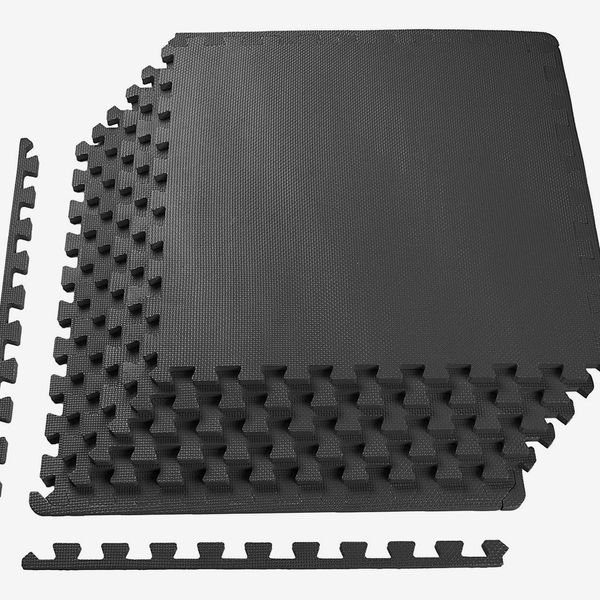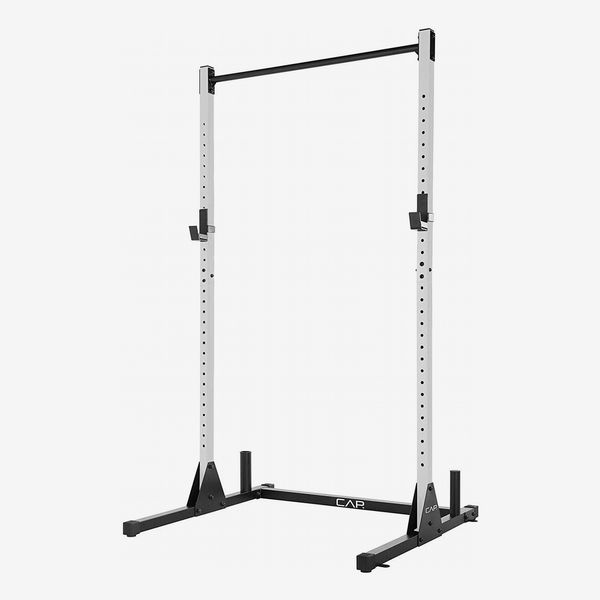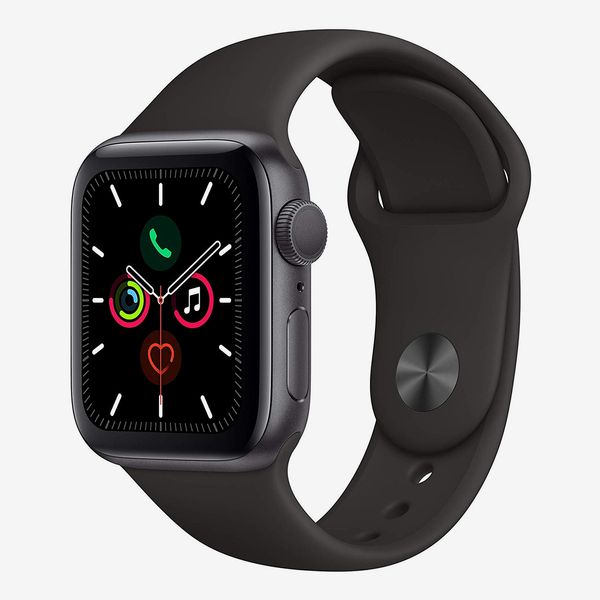
Gym culture can definitely help foster a sense of community, motivation, and blatant amenity abuse. (The amount of complimentary Kiehl’s grapefruit Liquid Body Cleanser I’ve helped myself to at Equinox could drown a rhino.) I’ve worked out at bigger gyms like 24 Hour Fitness and Gold’s; smaller mom-and-pops, where I was too afraid to enter the locker rooms; and a few outposts of the swanky ’Nox in Los Angeles, where I live. But, eventually, I grew tired of waiting 18 minutes for the *one* dead-lift rack and playing the game of mental Tetris that is figuring out how to cram cardio, weights, sauna, shower, and a smoothie into the two hours Equinox’s parking-validation covers. So, a few months ago, I canceled my membership. A month later, everyone on Twitter canceled their memberships to protest the gym’s parent company’s support of the Trump campaign. Accidentally, I apparently found myself on the right side of history (at least according to Twitter), and took it as a message from the fitness gods to put my days of #gymlife behind me in favor of working out at home.
For about the cost of two months of Equinox, I was able to build a totally functional home gym on the very small terrace of my home in Glendale. If outdoor space isn’t an option, all you really need is an area about the size of a his-and-hers burial plot. Obviously, my setup has limitations: There are no actual machines, weights, or hotties to stare at. But those downfalls are generously outweighed by the benefits. I never have to wait my turn, can listen to whatever music I want, shower in my own shower, and dry off with towels that haven’t been used by thousands of different, stinky people. Plus, I no longer need to waste money on overpriced-but-cute athleisure because I can just work out in my underwear.
Before I get to what is in it, I should note that I designed my home gym with a focus on fundamental exercises that work the whole body out: pull-ups, chin-ups, push-ups, squats, kettlebells, planking, jumping rope, and stretching. While these boomer sets aren’t going to tone any “vanity” muscles (nobody is getting “shredded” at my home gym), they do provide the type of good old-fashioned strength training that leaves you feeling worked out and offsets those days you don’t get “light” dressing on your lunchtime Sweetgreen salad. Read on for all the stuff I used to create my home gym, as well as for a few things I’m looking to add to it.
Gear in my home gym
Once you’ve chosen your home-gym space, the first thing to do is pad it up like a real gym. I did that using these interlocking tile mats, which can be arranged in various shapes and patterns to fit pretty much any area that works for you. They’re easy to clean and give enough cushion for jumping rope, squat-jumping, or the dreaded burpee. The pieces come in thicknesses ranging between half an inch and an inch; if you need more support, layer them on top of each other like a stack of flaxseed pancakes.
If you need more floor cushioning but don’t need a whole other set of puzzle-mat pieces, this yoga mat works great. It isn’t the finest yoga mat money can buy, but it does provide that extra bit of support I need during my marathon rope-skipping sessions (more on those later). And, like the puzzle mat, it’s super easy to clean. I just blast mine with a hose and let it air-dry. I have it in black, but Amazon also sells it in turquoise-green and teal for a few bucks less.
Pull-ups are such a good workout, but unless you’re that one kid from middle school, they are really hard to do — especially when in front of a hundred buff bros judging you. Doing pull-ups at home, though, will allow you to work your way up to perfect sets of ten in privacy. This particular piece isn’t pretty, but it’s cheap (for workout equipment), sturdy enough, and, for some reason, comes in a remarkably wide selection of colors. The stand clocks in at around seven feet tall, which means most normal-size people should be able to use it as is. I’m six-foot-nine, so I had to prop mine up on a couple of cinder blocks to get a full extension. If exposed cement brick isn’t your ideal décor scheme (my girlfriend LOVES it), find a crafty person who owes you money to build some wooden crates to support it, or just stack a few planks of wood beneath the base.
The benefits of jumping rope are pretty much universally agreed upon, but when I worked out at actual gyms, it was definitely the last thing I ever imagined myself doing. Necessity, however, is the mother of invention: For my home gym, I needed the most cardio burn I could get without having the space to really move around in, and I’m not bored (or flush) enough to buy a Peloton just yet. Key to a good jump-rope workout is finding the right rope — this one comes with removable handle weights, so you can increase the resistance as you progress (or decrease it as you slowly and inevitably get older and weaker). Plus, it’s long enough to clear my oversize frame, but can be adjusted if you’re more normal-size. Recently, I accidentally took a microdose of mushrooms with my 6 a.m. probiotics, and 45 minutes later I was smacked with the uncontrollable need to jump rope for an hour straight, in pure silence, Patrick Bateman–style. The following day, my body felt like it was crammed into one of Chris Black’s $2,800 “weekender duffels” and thrown down a flight of stairs. But, my God, was I proud of myself.
The kettlebell is an intimidating ball of steel meant to be flopped, tossed, and held like a cold, wet baby above your head at times. Amazon’s in-house version comes in weights that range between ten and 60 pounds. (You’ve got to wonder how much money the company loses every time it has to two-day ship a 60-pound ball of metal for free.) I use a 45-pound kettlebell, and love the classic swing between the legs; long ago, a trainer taught me to only swing it forward with my hips and thighs in a thrusting motion, instead of using my arms and shoulders. This advice has been a great way to make sure my form is always on point and that I don’t pull anything with a big-boy bell. Other great moves include goblet squats and the most badass kettle technique there is: the Turkish get-up.
Say what you will about its stylishness, but an Apple Watch really does change the game when it comes to tracking calories, heart rate, or even just the time of a workout. Even though I never wear it for dates, formal events, or anything where I need to look cool, my friends still make fun of me for having one, and maybe rightfully so. But I don’t care, because when paired with AirPods or other wireless headphones, the watch lets me skip podcast commercials or adjust volume mid-pump without having to pick up my phone and get it all sweaty. And when it comes to setting fitness goals, it even serves as a trainer of sorts: By tracking all of my movements (including non-workout-related dog walks, bike rides, and yardwork) with its “activity” function, the watch helps me better determine what actual exercises I need to do to keep on track with my calorie-burning. Just make sure to spring for the “sport loop” band — because you are using it for sport — and to wash the band once a week to avoid the dreaded stinky wrist.
Sometimes I’m forced to keep my workouts short because I have to hurry up and wait in traffic for an hour to get to work, then go inflame my carpal tunnel for eight hours on my laptop. This gadget helps me recover from days spent with my hands at the wheel and at my laptop keys with some wrist-strengthening and tension-relieving exercises. When spun at top speeds, the handheld tool has my strawlike forearms burning within 60 seconds. When rotated slowly and sensually in tandem with a breathing exercise, it helps soothe the tendons in my wrist, lower my heart rate, and gives my body something to do while my brain focuses on chilling out. The ball has also helped to generally improve my grip so that I don’t gas out my hands before my body’s ready to give up. It’s a novel little piece of gear that, on its own, would come in handy for anyone who plays tennis or golf or works with their hands a lot. The exact wrist ball I got is sold out, but based on its appearance and description, this model is basically the same, down to the LED lights (which turn on when the ball reaches a certain speed).
I’ll be honest: The only thing I truly miss about Equinox is the cold towels. This li’l fella comes with space enough for a week’s worth of frosty towels, with room to spare for water bottles on a hot day, or cans of cold brew when I need an extra push for cardio. It also has a warming function (suck on that, Equinox!) and is even USB-compatible, for when you need to bring a mini-fridge on the go. The refrigerator comes in an assortment of colors and patterns (some of which cost a few bucks less), but I say spring for the red to make a statement in this otherwise utilitarian setup. For an ever bigger statement, there is also a wild cow-print version.
Gear I want to buy for my home gym
Having a full-length mirror to observe your form while working out can be beneficial, but unless you literally live in your home gym, it’s probably not a good look for the house — indoors or out. Installing one of these dome-style security mirrors you’d find in a parking garage may seem like an equally bad idea, but I think it actually goes with my setup’s “industrial chic” aesthetic. Plus, this would be slightly less noticeable than a full-length mirror while still letting me check my form and see my surroundings (nothing worse than dropping that kettlebell on your iPhone). Not to mention, it would also help to break the fourth wall when working out alone, which can be very important, as staring at a wall for 90 minutes might turn a man.
I’ve always admired Richard Gere’s home-workout scene from the 1980 masterpiece American Gigolo. Surprisingly, gravity-boot technology hasn’t really advanced much in the 40 years since: The contraptions, which you attach around your ankles, clip on to a pull-up bar, allowing you to hang upside down. I would use them simply to get the stretch of a lifetime, or for some introverted crunches, which could very well be the difference between a six-pack and an eight-pack. Those who’ve never used gravity boots before might want to practice with a sturdy friend around before trying them out solo. I, for one, can’t think of a worse fear than being stuck hanging upside down by your feet. But, then again, fitness is all about overcoming fears.
A friend who’s also a newish dad can’t make it to the gym as much as he’d like to, and he swears by this power wheel for quick and quiet home workouts. We’ve all seen these contraptions collecting dust in actual gyms’ stretch areas, but for a home workout in a more confined space, I could see one suddenly becoming a lot more valuable. Where power wheels really shine is core-strengthening workouts: They add a level of difficulty and movement to things like planks, ab rollouts, and knee tucks. The foot straps on this one are removable if needed, and because maintaining a proper form on these wheels is a lot harder than it looks, the technique is a great thing to practice alone, far from judgy eyes.
Ask any serious athlete, and they’ll sing the total-body benefits of Battle Ropes. The simple but explosive activity of repeatedly whipping the thick ropes helps work out muscles you never even knew you had. But, like the power wheel and doing pull-ups, using these at an actual gym can be embarrassing, especially if you’re a beginner. This set’s price seems reasonable enough to give the ropes a whirl in my home gym, where nobody will see me flopping them around while blowing snot from my nose amid uncontrollable barks and moans. The ropes come in several lengths, with the smallest set stretching 30 feet, so they might be more practical for an outdoor home gym like mine. That said, they are usable indoors, and you can still get the benefits of working out with the ropes without extending them to their full length (just stretch them to whatever length your space allows for, and leave any unused rope coiled on the floor).
*A version of this article appears in the January 6, 2020, issue of New York Magazine. Subscribe Now!
The Strategist is designed to surface the most useful, expert recommendations for things to buy across the vast e-commerce landscape. Some of our latest conquests include the best acne treatments, rolling luggage, pillows for side sleepers, natural anxiety remedies, and bath towels. We update links when possible, but note that deals can expire and all prices are subject to change.


















